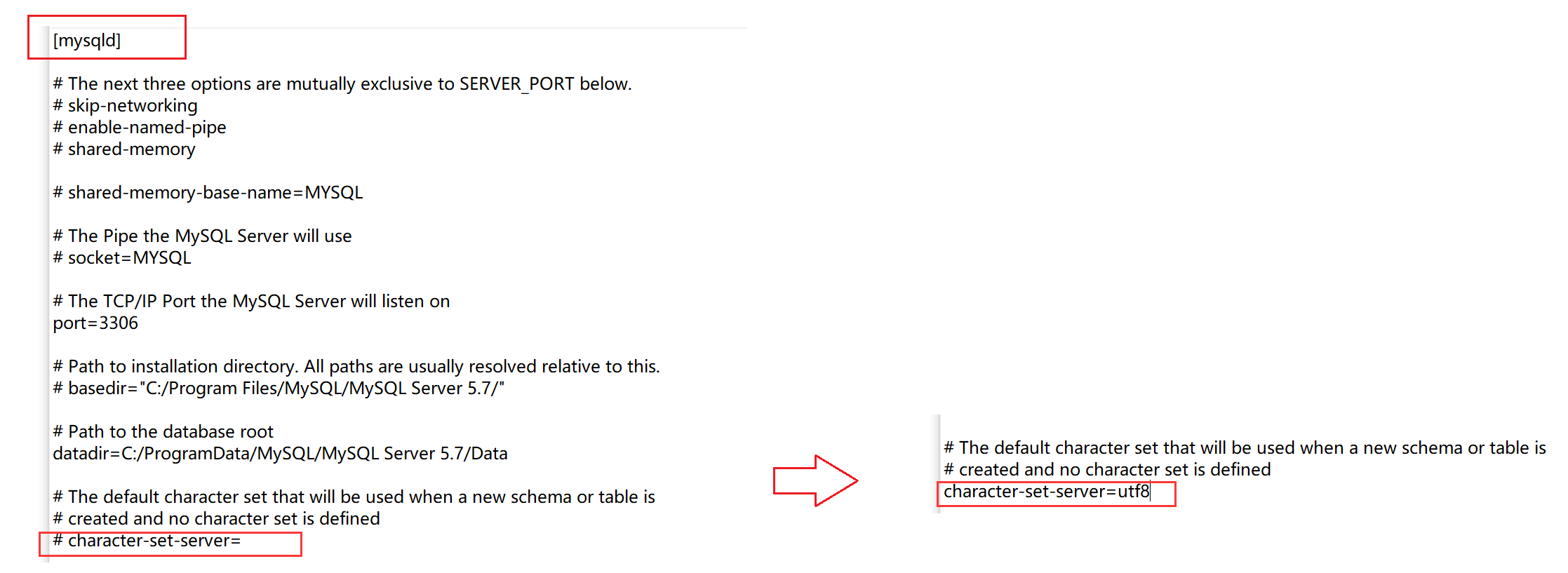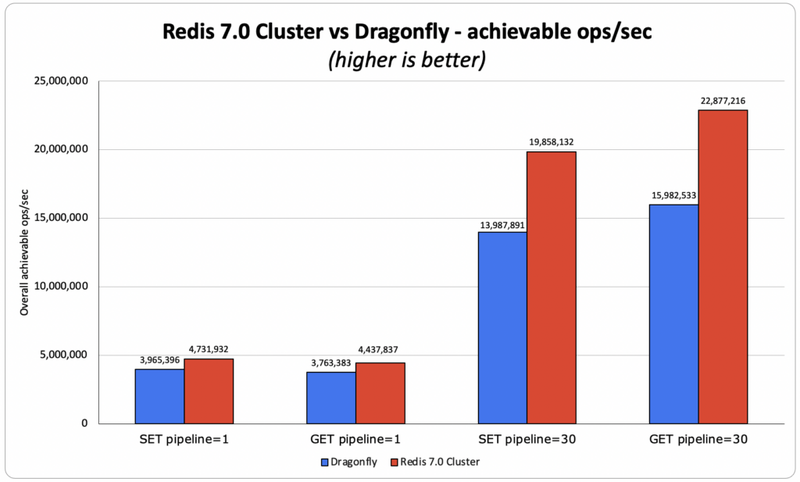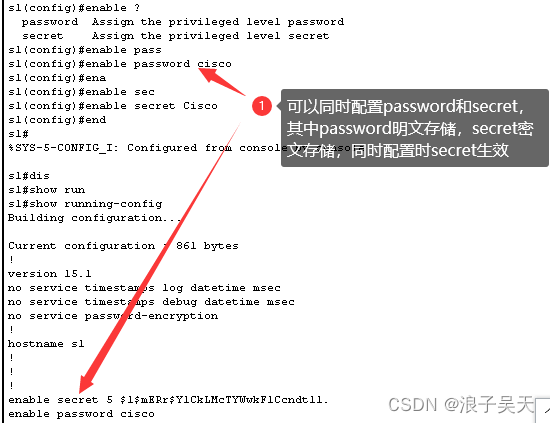当前位置:网站首页>ArrayList和LinkedList
ArrayList和LinkedList
2022-08-09 09:39:00 【小突击花呀】
ArrayList和LinkedList
1. ArrayList
1.1 ArrayList简介
在集合框架中,ArrayList是一个普通的类,实现了List接口
说明:
- ArrayList实现了RandomAccess接口,表明ArrayList支持随机访问
- ArrayList实现了Cloneable接口,表明ArrayList是可以clone的
- ArrayList实现了Serializable接口,表明ArrayList是支持序列化的
- 和Vector不同,ArrayList不是线程安全的,在单线程下可以使用,在多线程中可以选择Vector或者
CopyOnWriteArrayList - ArrayList底层是一段连续的空间,并且可以动态扩容,是一个动态类型的顺序表
1.2 ArrayList常见操作
| 方法 | 解释 |
|---|---|
| boolean add(E e) | 尾插 e |
| void add(int index, E element) | 将 e 插入到 index 位置 |
| boolean addAll(Collection<? extends E> c) | 尾插 c 中的元素 |
| E remove(int index) | 删除 index 位置元素 |
| boolean remove(Object o) | 删除遇到的第一个 o |
| E get(int index) | 获取下标 index 位置元素 |
| E set(int index, E element) | 将下标 index 位置元素设置为 element |
| void clear() | 清空 |
| boolean contains(Object o) | 判断 o 是否在线性表中 |
| int indexOf(Object o) | 返回第一个 o 所在下标 |
| int lastIndexOf(Object o) | 返回最后一个 o 的下标 |
| List subList(int fromIndex, int toIndex) | 截取部分 |
1.3 ArrayList的遍历
ArrayList 可以使用三种方式遍历:for循环+下标、foreach、使用迭代器
public static void main(String[] args) {
List<Integer> list = new ArrayList<>();
list.add(1);
list.add(2);
list.add(3);
list.add(4);
list.add(5);
// 1.使用下标+for遍历
for (int i = 0; i < list.size(); i++) {
System.out.print(list.get(i) + " ");
}
System.out.println();
// 2.借助foreach遍历
for (Integer integer : list) {
System.out.print(integer + " ");
}
System.out.println();
//3.使用迭代器
Iterator<Integer> it = list.listIterator();
while(it.hasNext()){
System.out.print(it.next() + " ");
}
System.out.println();
}
1.4 ArrayList 的扩容机制
- 检测是否真正需要扩容,如果是调用grow准备扩容
- 预估需要库容的大小
初步预估按照1.5倍大小扩容
如果用户所需大小超过预估1.5倍大小,则按照用户所需大小扩容
真正扩容之前检测是否能扩容成功,防止太大导致扩容失败 - 使用copyOf进行扩容
1.5 ArrayList的模拟实现
import java.util.Arrays;
public class ArrayList<E>{
//ArrayList的模拟实现
private Object[] array;
private int size;
//构造方法
public ArrayList(){
}
public ArrayList(int initCapacity){
if(initCapacity>0){
array = new Object[initCapacity];
}else if(initCapacity ==0){
array = new Object[0];
}else{
throw new IllegalArgumentException("初始容量为负数");
}
}
public int size(){
return size;
}
public boolean isEmpty(){
return 0 == size;
}
//尾插
public boolean add(E e){
ensureCapacity(size+1);
array[size++] = e;
return true;
}
//在指定位置插入元素e
public void add(int index,E e){
rangeCheckForAdd(index);
ensureCapacity(size+1);
//将index及其后面的元素统一往后搬移一个位置
for(int i =size-1;i>=index;i--){
array[i+1] = array[i];
}
array[index] = e;
size++;
}
//删除index位置上的元素
public E remove(int index){
rangeCheck(index);
E e = (E)array[index];
//将index之后的元素统一往前搬移一个位置
for(int i =index+1;i<size;i++){
array[i-1] = array[i];
}
size--;
return e;
}
//如果o存在,则删除
public boolean remove(Object o){
int index = indexOf(o);
if(index == -1){
return false;
}
remove(index);
return true;
}
//检测下标是否异常
private void rangeCheck(int index){
if(index <0 ||index>=size){
throw new IndexOutOfBoundsException("下标越界");
}
}
//检测插入时下标是否异常
private void rangeCheckForAdd(int index){
if(index>size){
throw new IllegalArgumentException("add下标越界");
}
}
//获取index位置上的元素
public E get(int index){
rangeCheck(index);
return (E)array[index];
}
//将index位置上的元素设置为e
public E set(int index,E e){
rangeCheck(index);
array[index] = e;
return e;
}
//清空
public void clear(){
for(int i =0;i<size;i++){
array[i] =null;
}
size =0 ;
}
//获取o第一次出现的位置
public int indexOf(Object o){
if(null == o){
for(int i =0;i<size;i++){
if(array[i] == null){
return i;
}
}
}else{
for(int i =0;i<size;i++){
if(array[i].equals(o)){
return i;
}
}
}
return -1;
}
//获取o最后一次出现的位置
int lastIndexOf(Object o){
if(o==null){
for(int i =size-1;i>=0;i--){
if(array[i] == null){
return i;
}
}
}else{
for(int i =size-1;i>=0;i--){
if(array[i].equals(o)){
return i;
}
}
}
return -1;
}
//检测o是否存在
public boolean contains(Object o){
return indexOf(o)>0;
}
//获取[from,to)的一个子序列
ArrayList<E> subList(int fromIndex,int toIndex){
if(toIndex-fromIndex<0){
throw new IllegalArgumentException("参数非法");
}
ArrayList<E> list = new ArrayList<>(toIndex-fromIndex);
for(int i =fromIndex;i<toIndex;i++){
list.add((E)array[i]);
}
return list;
}
//扩容
private static final int MAX_ARRAY_SIZE = Integer.MAX_VALUE-8;
private void ensureCapacity(int initCapacity){
int oldCapacity = array.length;
int newCapacity = oldCapacity+(oldCapacity>>1);
if(newCapacity<initCapacity){
newCapacity = initCapacity;
}
if(newCapacity >MAX_ARRAY_SIZE){
newCapacity = MAX_ARRAY_SIZE;
}
array = Arrays.copyOf(array,newCapacity);
}
@Override
public String toString() {
String s ="[";
if(size>0){
for(int i =0;i<size-1;i++){
s+= array[i];
s+= ",";
}
s += array[size-1];
}
s+="]";
return s;
}
}
2.LinkedList
2.1 LinkedList简介
LinkedList的底层是双向链表结构,由于链表没有将元素存储在连续的空间中,元素存储在单独的结点中,然后通过引用将节点连接起来了,因此在任意位置插入或者删除元素时,不需要搬移元素,效率比较高。
说明:
- LinkedList实现了List接口
- LinkedList的底层使用了双向链表
- LinkedList没有实现RandomAccess接口,因此LinkedList不支持随机访问
- LinkedList的任意位置插入和删除元素时效率比较高,时间复杂度为O(1)
2.2 LinkedList常用方法
| 方法 | 解释 |
|---|---|
| boolean add(E e) | 尾插 e |
| void add(int index, E element) | 将 e 插入到 index 位置 |
| boolean addAll(Collection<? extends E> c) | 尾插 c 中的元素 |
| E remove(int index) | 删除 index 位置元素 |
| boolean remove(Object o) | 删除遇到的第一个 o |
| E get(int index) | 获取下标 index 位置元素 |
| E set(int index, E element) | 将下标 index 位置元素设置为 element |
| void clear() | 清空 |
| boolean contains(Object o) | 判断 o 是否在线性表中 |
| int indexOf(Object o) | 返回第一个 o 所在下标 |
| int lastIndexOf(Object o) | 返回最后一个 o 的下标 |
| List subList(int fromIndex, int toIndex) | 截取部分 list |
2.3 LinkedList的遍历
使用foreach遍历或者迭代器
public static void main(String[] args) {
LinkedList<Integer> list = new LinkedList<>();
list.add(1); // add(elem): 表示尾插
list.add(2);
list.add(3);
list.add(4);
list.add(5);
list.add(6);
list.add(7);
System.out.println(list.size());
// foreach遍历
for (int e:list) {
System.out.print(e + " ");
}
System.out.println();
// 使用迭代器遍历---正向遍历
ListIterator<Integer> it = list.listIterator();
while(it.hasNext()){
System.out.print(it.next()+ " ");
}
System.out.println();
// 使用反向迭代器---反向遍历
ListIterator<Integer> rit = list.listIterator(list.size());
while (rit.hasPrevious()){
System.out.print(rit.previous() +" ");
}
System.out.println();
}
2.4 LinkedList的模拟实现
import java.util.List;
public class LinkedList <E>{
//双向链表结点的结构
public static class ListNode<E>{
E elem;
ListNode<E> next;
ListNode<E> prev;
public ListNode(E e){
elem = e;
}
}
ListNode<E> first;
ListNode<E> last;
int size = 0;
public LinkedList(){
}
//头插法
public void addFirst(E e){
ListNode<E> newNode = new ListNode<>(e);
if(null == first){
//1.为空
last = newNode;
}else{
//2.不为空
first.prev = newNode;
newNode.next = first;
}
first = newNode;
size++;
}
//尾插
public void addLast(E e){
ListNode<E> newNode = new ListNode<>(e);
if(null == first){
//1.为空
first = newNode;
}else{
//2.不为空
last.next = newNode;
newNode.prev = last;
}
last = newNode;
size++;
}
//头删
public void removeFirst(){
if(null == first){
return;
}else if(first == last){
//链表中只有一个结点
first = null;
last = null;
}else{
//链表中至少有两个结点
first = first.next;
first.prev =null;
}
size--;
}
//尾删
public void removeLast(){
if(first == null){
return;
}else if(first == last){
first = null;
last = null;
}else{
last = last.prev;
last.next=null;
}
size--;
}
//将e尾插到链表中
public void add(E e){
addLast(e);
}
//任意位置插入,第一个数据结点为0号下标
public boolean addIndex(int index,E e){
//参数进行检测
if(!(index>=0) && index<= size){
throw new IndexOutOfBoundsException("addIndex:下标越界");
}
if(index == size){
addLast(e);
}else {
ListNode<E> cur = null;
//标准库中大佬的实现
if(index<((size)>>1)){
//index表示的结点在前一半当中--从前往后找
cur = first;
for(int i =0;i<index;i++){
cur = cur.next;
}
}else{
//index表示的结点在后一半当中
cur = last;
for(int i =size-1;i>index;i--){
cur = cur.prev;
}
}
if(cur == first){
addFirst(e);
}else {
ListNode<E> newNode = new ListNode<>(e);
//2.在插入新节点
//a.在不断开原链表的情况下,先将新结点链接到链表中
newNode.prev = cur.prev;
newNode.next = cur;
//b.再将链表断开,将newNode链接进来
newNode.prev.next = newNode;
cur.prev = newNode;
size++;
}
}
return true;
}
//查找关键字e是否在链表中
public boolean contains(E e){
return indexOf(e) !=-1;
}
public int indexOf(E e){
ListNode<E> cur = first;
int index =0;
while (cur!=null){
if(e.equals(cur.elem)){
return index;
}
index++;
cur = cur.next;
}
return -1;
}
//从后往前找第一个只出现一次的e的位置
public int lastIndexOf(E e){
ListNode<E> cur = last;
int index = size -1;
while (cur!=null){
if(e.equals(cur.elem)){
return index;
}
cur = cur.prev;
index--;
}
return -1;
}
// 删除链表中值为e的元素---从前往后找,找到第一个为e的元素将其删除
public boolean remove(E e){
// 1. 找e对应的节点
ListNode<E> cur = first;
while(cur != null){
if(e.equals(cur.elem)){
break;
}
cur = cur.next;
}
if(cur == null){
return false;
}
// 2. 删除该节点
if(cur == first){
// 头删
removeFirst();
}else if(cur == last){
// 尾删
removeLast();
}else{
// 任意位置的删除
cur.prev.next = cur.next;
cur.next.prev = cur.prev;
size--;
}
return true;
}
public int size(){
return size;
}
public boolean isEmpty(){
// return 0 == size;
return first == null;
}
@Override
public String toString() {
String s = "[";
if(first == null){
s += "]";
return s;
}
ListNode<E> cur = first;
while(cur.next != null){
s += cur.elem;
s += ",";
cur = cur.next;
}
// 拼接最后一个节点中的值域
s += cur.elem;
s += "]";
return s;
}
}
3. 链表
3.1链表的概念及结构
链表是一种物理存储结构上非连续存储结构,数据元素的逻辑顺序是通过链表中的引用链接次序实现的。
注意:
- 链式结构在逻辑上是连续的,但是在物理上不一定连续
- 现实中的结点一般都是从堆上申请出来的
- 从堆上申请的空间,是按照一定的策略来分配的,两次申请的空间可能连续,也可能不连续
链表的结构有非常多情况,下面的情况组合起来有8种链表结构
1.单向或者双向
2.带头或者不带头
3.循环或者非循环
重点掌握两种:
- 无头单向非循环链表:结构简单,一般不会单独用来存数据,实际中更多的是作为其他数据结构的子结构,如哈希桶、图的邻接表等等
- 无头双向链表,在java的集合框架中LinkedList底层实现就是无头双向循环链表。
3.2 链表的实现
public class SingleLinkedList <E> {
public static class Node<E> {
E value;
Node<E> next;
public Node(E value) {
this.value = value;
}
}
Node<E> head;
//头插法
public void addFirst(int data) {
Node<E> newNode = new Node(data);
if (null == head) {
head = newNode;
} else {
newNode.next = head;
head = newNode;
}
}
//尾插法
public void addLast(int data) {
Node<E> newNode = new Node(data);
if (head == null) {
head = newNode;
} else {
//1.找最后一个结点
Node<E> cur = head;
while (null != cur.next) {
cur = cur.next;
}
cur.next = newNode;
}
}
//任意位置插入,第一个数据结点为0号下标
public boolean addIndex(int position, int data) {
//1.检测测试是否合法
if (position < 0 || position >= 4) {
throw new IllegalArgumentException("addIndex:position非法");
}
if (position == 0) {
addFirst(data);
return true;
}
//2.找到index位置的结点,保存其前一个
Node<E> cur = head;
Node<E> prev = null;
while (position != 0) {
prev = cur;
cur = cur.next;
position--;
}
//3.插入新结点
Node<E> newNode = new Node(data);
newNode.next = cur;
prev.next = newNode;
return true;
}
//查找是否包含关键字key是否在单链表当中
public boolean contains(E e) {
Node<E> cur = head;
while (cur != null) {
if (e.equals(cur.value)) {
return true;
}
cur = cur.next;
}
return false;
}
//得到单链表的长度
public int size() {
Node<E> cur = head;
int count = 0;
while (null != cur) {
count++;
cur = cur.next;
}
return count;
}
public String toString() {
Node<E> cur = head;
String str = "[";
while (cur != null) {
str += cur.next;
if (cur.next != null) {
str += ",";
}
cur = cur.next;
}
str += "]";
return str;
}
//删除第一次出现关键字为key的结点
public void remove(E e){
Node<E> cur = head;
Node<E> prev = null;
while (cur!= null){
if(e.equals(cur.value)){
//删除结点
//注意,可能删除的是第一个结点,也可能是其他结点
cur.value = null;
if(prev == null){
//删除第一个结点
head = cur.next;
}else{
prev.next = cur.next;
}
return;
}
prev = cur;
cur = cur.next;
}
}
//删除所有值为key的结点
public void removeAllkey(E e){
Node<E> cur = head;
Node<E> prev = null;
while (cur!= null) {
if (e.equals(cur.value)) {
//删除结点
cur.value = null;
if (prev == null) {
head = cur.next;
cur = head;
} else {
prev.next = cur.next;
cur = prev.next;
}
} else {
prev = cur;
cur = cur.next;
}
}
}
}
4. ArrayList和LinkedList的区别
- 是否保证线程安全:ArrayList和LinkedList都是不同步的,也就是不保证线程安全;
- 底层数据结构:ArrayList底层使用的是Object数组;LinkedList底层使用的是双向链表数据结构(JDK1.6之前使用的是循环链表,1.7取消了循环,注意双向链表和双向循环链表的区别)
- 插入和删除是否受元素位置的影响:
(1)ArrayList任意位置插入和删除元素时,就需要将后续元素整体搬移,时间复杂度为O(N),效率较低
(2)LinkedList任意位置插入和删除元素时,不受元素位置的影响,效率比较高,时间复杂度为O(1); - 是否支持随机访问:LinkedList不支持高效的随机访问,而ArrayList支持。快速随机访问就是通过元素的序号快速获取元素对象。
- ArrayList需要扩容,LinkedList没有扩容的概念
- ArrayList缓存利用率高
边栏推荐
猜你喜欢
随机推荐
超详细的MySQL基本操作
class object property method class member
时间复杂度和空间复杂度
多线程案例——阻塞式队列
《刷题日记》2
Cisco common basic configuration of common commands
梦笔记0809
LeetCode147:对链表进行插入排序 画图分析 思路清晰!
字符串
IDEA见过就会爱上的超实用快捷键,一键十行!
EndNoteX9 OR X 20 Guide
Command line query database
STM32F103实现IAP在线升级应用程序
pycharm在创建py文件时如何自动注释
类 对象 属性 方法 类的成员
电脑硬件基础知识科普
文件操作
latex中复杂公式换行等号对齐
MySQ事务控制语言-TCL,进来学习!
Ontology development diary 04 - to try to understand some aspects of protege









